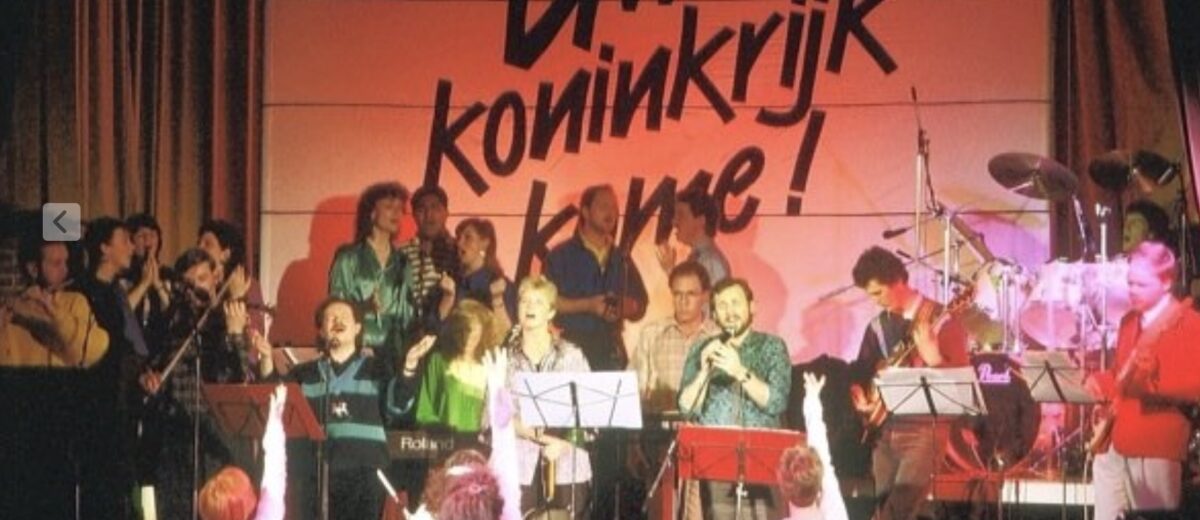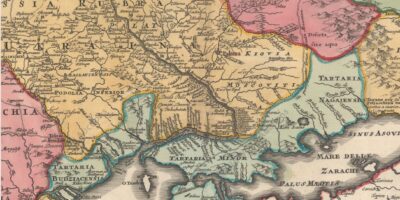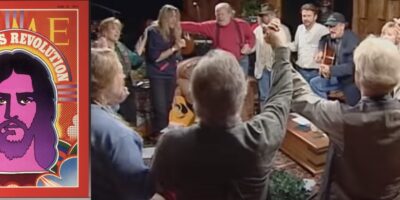(The second of two WW’s on the emergence of the contemporary worship movement)
The 1972 Munich Olympic Games brought young people from every continent to evangelise among athletes and spectators from the communist world, the Muslim world and the free world.
A thousand young people converged on a castle in a Bavarian village called Hurlach. Many brought with them the guitar-based worship culture of the Jesus Revolution, as captured by the iconic film about the Olympics outreach, Revolution of Love. Songs from the fledgling worship movement were picked up here and spread across Europe and beyond.
Hurlach Castle, YWAM’s first location in Germany, would go on to become a main source of German-language contemporary worship over the following decade through regular worship events. Seminars, song-writing and nation-wide distribution of songbooks and recordings flourished under the direction of Marion Warrington. She married fellow New Zealander Keith at the castle, which became their home base for the first phase of their life-long ministry promoting renewal and reformation in Germany.
Marion realised she was following a rich tradition of the Reformers, whose fresh and radical forms of worship in their day had too often become conservative and routine. Renewal movements had always expressed themselves in new forms of worship, as in Luther’s day when the German Reformer asked: ‘Why should the devil have all the good music?’ Luther versified many psalms for singing. Bach set much of Luther’s Bible translation to music. Calvin oversaw the creation of the Geneva Psalter to encourage congregations to sing public prayers.
American Linda McGowen Panci tells in her first-hand account of the worship movement in the French-speaking world, Love notes to God, how Marion had earlier introduced the singing of contemporary scripture songs to the first YWAM training centre in Lausanne, Switzerland – as pioneered in her homeland by David and Dale Garratt. The Garratts found themselves thrust into an unfamiliar teaching role when Loren Cunningham invited them to Lausanne. Linda explains how the Garratts had also shaped her own understanding of worship – not just singing about God, but to and for Him. Engaging heart, mouth and body in worship sometimes meant leading with eyes shut in a prayerful attitude.
As Marion focused on Germany, Linda pursued her own vision to collate new French songs, alongside translations from English, into a collection of psalms, hymns and spiritual songs, laboriously set on a manual music-writer (before computers transformed the process). Linda’s first edition of J’aime l’Eternel was published in 1975 with 4000 copies. The following year another 8000 were printed and two years later another 20,000. By 2011, some 200,000 copies had been distributed throughout the French-speaking world. Today the four volumes of Jaime l’Eternal offer 1100 songs to French-speaking worshippers the world over.
Double registrations
Linda was asked to be the music director for Mission ’80, a large youth missions conference to be held in Lausanne in December 1979. When registrations doubled to 5000 in the last weeks before the event, parallel programmes were hastily planned. Linda had to find more worship leaders. So she invited Bruce Clewett, a German-speaking American who was pioneering YWAM-style worship in Austria. And myself.
As mentioned last week, my journey had taken me from New Zealand to Toronto, to a worship tour in cathedrals in England and Holland in the summer of ’74, as manager of the Shekinah company of singers, dancers and musicians. At a concert in Amsterdam I had met YWAM leader Floyd McClung. He later invited me to join him at the Heidebeek training community in the Dutch countryside in September 1975 – a place where I would meet my wife, father three sons and call home for the next 43 years.
Although I initially came to edit a magazine, I also became involved in leading and teaching about worship, an integral part of the Heidebeek community lifestyle. From the growing network of YWAM centres across Western Europe, teams were fanning out to teach worship seminars, some crossing into Eastern Europe working with Catholic renewal movements, as in Poland and Romania. Al Akimoff, heading YWAM’s work in Slavic nations, had set up worship seminars with the Garratts early in the 1970s. His teams distributed thousands of worship cassettes to Eastern Europeans hungry for spiritual renewal. My first trip to Poland was in 1979 to Legnica to teach on worship alongside Bill Davidson who had been part of the Salvation Army band Joystrings that hit the charts in the ‘60s.
At Heidebeek, we began holding weekly worship and teaching evenings, as both the Lausanne and Hurlach centres were doing. As in Switzerland and Germany, people came from far and wide to taste the new style worship. In 1982, we recorded in Dutch the first of a series of ‘Muziek voor de Koning’ (Music for the King) recordings. English publishers Kingsway asked for us to produce an English version, telling us: ‘The only word we understand is ‘Hallelujah’ but we like your balance of studio quality and live recording’.
Later they asked us to provide the ‘choir’ for Graham Kendrick’s first congregational recording. Graham came across to Heidebeek with his soundtracks and recording engineer, Les Moir. Les later authored a history of the worship movement in the English-speaking world called Missing Jewel. About the Garratt’s first extended-play recording, Scripture in Song – on which my brother and I sang as mentioned last week – he wrote that ‘they had no idea that it would take off around the world and set the pace for a whole new wave of songwriters and worship leaders influencing the shape of church worship everywhere’.
Les also credits Scripture in Song with igniting worship music in Calvary Chapel churches in California, where the Jesus Movement was birthed along with the Maranatha Music label. One of the classics of the Jesus Movement, Seek ye first, by Karen Lafferty, was also birthed at Calvary Chapel. Karen joined us at Heidebeek in 1979 for a Discipleship Training School and later started Musicians for Missions (MfM) in Amsterdam.
‘Heidebeek choir’
Karen and her ‘Musicianaries‘ helped me set up a series of Concerts for the King held in each province (see photo above) introducing what was becoming known as the ‘Praise’ genre to a broader Christian public. In the mid-80s, the Evangelical Broadcasting Company (EO) in The Netherlands asked me to come with Karen and the ‘Heidebeek choir’ – i.e. the whole community – to lead the ‘singing’ (a mixture of traditional psalms and hymns along with ‘our’ sort of worship songs) at their annual EO Jongerendag (Youth Day) which attracted 10,000 conservative Christian youth. This we did three years in a row, introducing the Dutch Christian public to ‘contemporary worship’, despite instructions that our hands should not rise above our hips! A nationally-known organist, who had played for years at these events, thought it was ‘music as usual’ and assumed the lead. I, with my puny guitar, understood I was supposed to give the lead. Transition from the old to the new was not always smooth!
Mission ’87, successor to the earlier youth missions event in Lausanne, was now planned to be held in Utrecht, The Netherlands. When I was given the responsibility for the music and worship, I relished the opportunity to introduce Graham Kendrick to a broader European audience. So Graham and I shared the worship leading for the 10,000 young Europeans coming from all corners of western Europe and even a smattering from across the Iron Curtain.
By now, contemporary worship was becoming more broadly embraced in different churches. In 1989, the EO asked me to front their first televised ‘praise’ programme – yet still with instructions not to raise our hands above our shoulders!
A generation later, my son Antonie had become well-known as a worship-leader and songwriter among his Dutch contemporaries. Responsible for worship at Soul Survivor in Holland, he later went to the Kingsway studios in England to mix the worship recordings with guest-artist Matt Redman. During introductions in the studio, the recording engineer exclaimed excitedly: “You’re Jeff’s son! I’m Les Moir. I engineered for your father and Graham Kendrik. Now I’m doing the same for you and Matt!”

Till next week,




Very interesting!
Very interesting